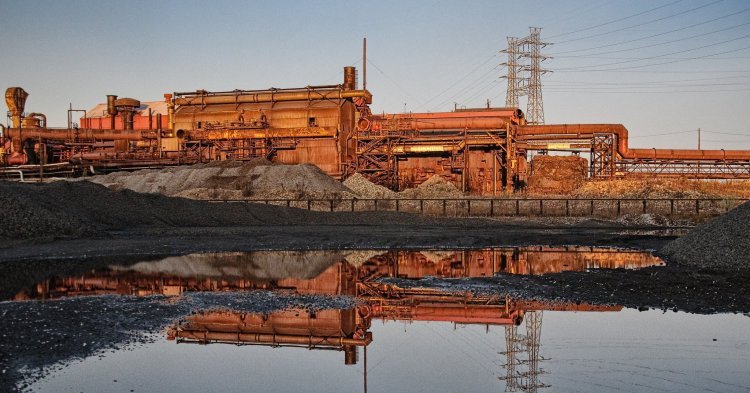This article is the first in a three-part series on the resurgence of industrial policy in Europe.
Industrial policy has, in the last few years, attracted the attention of Western politicians, policymakers and businesspeople once again, after a long period of disinterest. From extensive subsidies for microchip manufacturing to a new understanding of what can be achieved with trade deals, politicians in Europe, the USA and elsewhere are coming back to active decision making in this field after decades of leaving industry to the free market’s whims.
Understanding this shift, and how it intersects with other topics (such as trade or science policy), is key to charting a path forward for a stronger, greener and more social European industry. In this series of three articles, I hope to first explain the backstory of how this change in perception by political and business leaders came about, what are the highlights of the new European industrial policy, and what are the main themes and challenges that lie ahead for a successful European industrial policy.
The neoliberal economic world
The economic crisis that struck Western economies in the 1970s, with its high inflation and low-to-no economic growth (a combination known as “stagflation”), spelled the end for the Keynesian social-democratic consensus that had emerged after World War 2. To combat the effects of the crisis, a new wave of conservative politicians, such as Ronald Reagan in the United States and Margaret Thatcher in the United Kingdom, devised the implementation of a new economic policy, later known as neoliberalism, that sought a return to the deregulated free market as the main driver and force of the economy as opposed to the State and trade unions.
With respect to trade policy, neoliberalism spoused a strongly pro-free trade ideology, along with much greater freedom to international movements of capital and goods. The underlying assumption was that free trade would make for a more efficient economy with lower prices for the end consumer, as goods could be produced in those countries where it was cheaper. The free market cared not for politics, only maximizing profits, and this in turn benefitted everyone at both sides of the transaction.
This policy combined with the underlying trend in developed economies towards the service sector to produce mass de-localization of industrial production from developed Western economies to developing, mainly Asian, countries where the cost of labour was much lower. The resulting shift in the domestic economies of these countries caused the severe impoverishment of formerly industrial and prosperous regions, such as the Rust Belt in the USA. Free trade and deregulation also had a political case to make: “modernization theory” claimed that countries democratized as they economically developed and embraced free market economics. As such, delocalizing factories to China and the privatization of public assets after the fall of the Soviet Union would lead those countries towards democracy and the rule of law, and integrate them in the international community.
As global shipping and logistics improved, supply chains also became ever more complex, with high-end technological goods requiring parts and pieces produced across multiple countries, even continents. Crucially, in searching for higher efficiency, most corporations adopted the “just in time” policy, by which products are only manufactured as they are being sold and supplies for production are only ordered as they are required, with the goal of having no stock of either to save on inventory costs. So long as global shipping remained steady and reliable, accurate planning could keep production flowing, and lower costs and higher profits could be achieved.
In combination, these policies worked to control inflation and boost economic growth for the overall economy, taking Western economies out of the slump of 1970s stagflation. However, the massive economic reorganization brought on by neoliberal policies had its impact on economic inequality. The income of the top 1% of earners in the USA, which had fallen sharply until the 1950s and remained steady around 8% of total national income until the stagflation period, skyrocketed back to more than 22% by 2012. Meanwhile, average real (i.e., inflation-adjusted) wages only recovered their 1973 value in 2019. Combined with the massive growth in income inequality in the period, this paints a picture of a society in which a very limited number of individuals have access to much bigger incomes than before, but where big sectors of the population have seen their living standards stagnate, and even fall. Although their stronger welfare States somewhat shielded their societies compared to the United States, Western Europeans over this period similarly felt the effects of rising inequality and loss of economic opportunity in formerly industrial areas.
The cracks show
While economic inequality and stagnant standards of life had spread in much of the Western developed world, it was with the 2008 Financial Crisis that criticisms from different sources against neoliberal policies began to become mainstream, fuelled by the effects of austerity policies and loss of living standards.
This worsening of the economic situation led to the well-known wave of populism that has surged in all Western democracies, while taking different forms in each country. Many voters who supported populist parties and political movements were motivated by a worsening of their economic future since the Crisis and well before that, with a desire to “stick it” to a political establishment that was perceived to have left them by the wayside.
Rising inequality and its political consequences contradicted neoliberalism’s promises about better economic prospects for all, but this is not the only point where its core assumptions were challenged. As mentioned earlier, it had been assumed by many in the neoliberal camp that the free market set countries on the road to democratization. But by 2010, the fastest-growing economy in the world, China, had not only failed to democratize, but its ruling Chinese Communist Party was beginning to use modern technologies and a stronger economy to tighten its grip on Chinese society and extend its influence abroad. Additionally, during the 2010s, growing concerns about climate change and the need for a fast decarbonization led many to the realization that the transition to a green economy could not be left to markets alone, or even to simple State regulation: the transition had to happen fast, or else the consequences of climate change would be dire. States, it increasingly appeared, needed to actively step in before it was too late.
But the true breakdown of the neoliberal policy setup has only come in the last couple of years. The onset of the Covid-19 pandemic in 2020 caught Europe and the United States of America by complete surprise, with massive shortages of what were now essential goods such as ventilators and facemasks, the production of which had long been outsourced to countries like China. “Just in time” policies and little government foresight also meant there was very little in the way of emergency reserves of these key goods, leading Western countries to fight for supplies in the Chinese market and impose aggressive rationing until some domestic production was established.
Similarly, the recent invasion of Ukraine by Vladimir Putin’s Russia has forced much of Europe to reconsider its reliance on Russian gas, the imports of which had grown tremendously over the last two decades despite the voices calling for caution in relying too much on Putin’s regime. Indeed, once the invasion began, and the European Union joined the international community in harshly sanctioning Russia, the invader country began to slowly cut the gas supply to those countries, leading to skyrocketing gas prices and inflation. Blind trust in international supply chains ultimately controlled by autocrats had led the West astray.
This confluence of factors (economic inequality and its political consequences, the over-reliance on foreign strategic raw materials and goods, the need for a swift ecological transition and the budding conflict between autocracies and democracies) is much, but not all, of what has taken us to the current shift in industrial policy, in a new and more unstable world where it is also the State, and not only the market, that has to shape and steer economic and industrial growth.


Follow the comments: |
|
